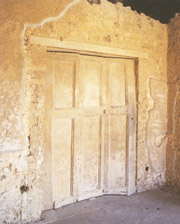
THE DAY AFTER
A few days after the eruption an imperial commission of senators arrived in the Mount Vesuvius area to assess the damage and organise aid for the people. The land all the way from Naples to Stabiae was covered in a blanket of dark ash. There were no longer any houses, roads or trees. All forms of life had been wiped out.
The commission asked the Emperor Titus to help in repairing the damage to the town.
In 80 A.D. the Emperor came in person to the disaster areas but decided not to undertake any work in favour of the irredeemably buried towns of Pompeii and Herculaneum.
The inhabitants who had survived the disaster were the first to begin excavations at Pompeii in an attempt to recover statues of their Gods and sacred objects from the ruins of their homes.
The site of Pompeii remained barren and the inhabitants looked elsewhere for refuge, abandoning the now inhospitable place for ever.
In 106 A.D., Titus wrote his Histories and published the letters of an eyewitness to the tragedy, Pliny the Younger. In one of his works the Emperor Marcus Aurelius (121-180 A.D.) referred to the fate of the towns as an example of the frailty and precarious nature of our earthly existence.
In the early III century the historian Dion Cassius gave a new account of the catastrophe which had become news one again following another violent explosion of Vesuvius.
The emperor Alexander Severus (208 - 235 A.D.) began excavations to recover marble, columns and statues, but the works were soon interrupted. From the on Pompeii was completely forgotten. All that was left of the towns were vague directions on Roman maps, such as the Tabula Peutingeriana, which were reproduced up to the Middle Ages.






